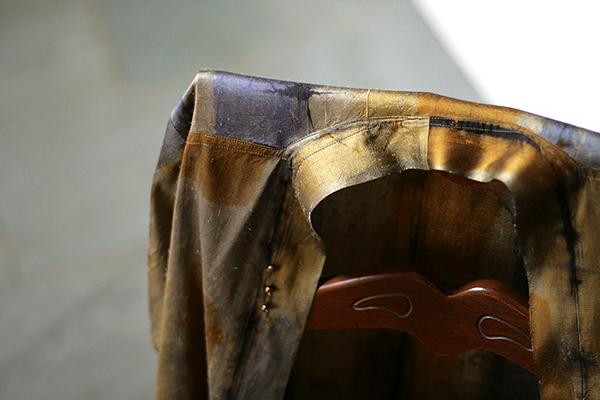
Curious to learn more about what is considered wearable art (or is not) I searched and found representations that ranged from jewel encrusted robes to the latest tech savvy dresses which combine architecture, the human body and new media (wireless interactive technologies and smartfoils). Apparently, the smartfoils change their level of transparency as the viewer gets closer to the dress—not sure which way THAT works! Studio Roosegaarde
There are countless examples of iconic wearable art. Just take a look at any royal court, chieftain robe, theatrical costume, headdress or even papal shoes (not so much anymore, thankfully). That type of wearable art conveys position, power, and prestige and in some cases a connection to the gods with a bonus of religious protection!
So, if wearable art is dressing to impress, then everyday clothing is wearable art’s country cousin. Its humble purpose is function over form. The oddball shapes that make up pant legs and sleeves protect us, keep us warm, keep the sun off our shoulders and in a way draw a boundary between us and not us. Not so much power and prestige here.
Yet clothing’s form is very important to us. So, if we’re not telegraphing position and power, what meaning do clothes have that motivate us to create beautiful garments? The motivation lies in how we can manipulate clothing to reflect back our single uniqueness and individuality to others and influence how they perceive us. It’s the identity we express when we seek to interpret our own creativity in what we wear.
Making ‘art to wear’ is a challenging process. The combination of creative drive and pushing the boundaries of personal aesthetic helps to satisfy our quest for identity. New uses of technology allow artists to manipulate design and the use of materials in completely new ways. Such as the 3D printer that makes shoes! Shifting Paradigms Exhibit. The Shifting Paradigms: Fashion + Technology exhibit at Kent State University’s Museum examines the question of how future clothing and accessories design will utilize new technologies. While technology as a common tool will play a much larger role in the future, the important part is the process of making. It’s original work. And with all original work, it comes down to what a person does with the materials.
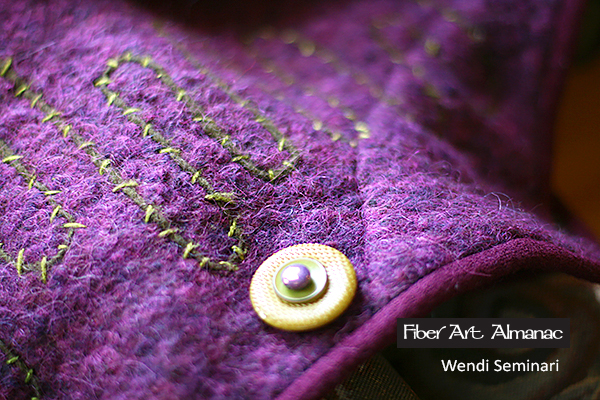
This piece is first in a series she calls, Flow. The concept of Flow began when Wendi read the book with the same name by Milhaly Csikszentmihalyi. Wendi says her work making wearable art gives her deep enjoyment, enhances her creativity and through this feels completely present in the moment. In this piece, Flow represents movement through space and time. She likens it to a meandering stream which follows a winding course.
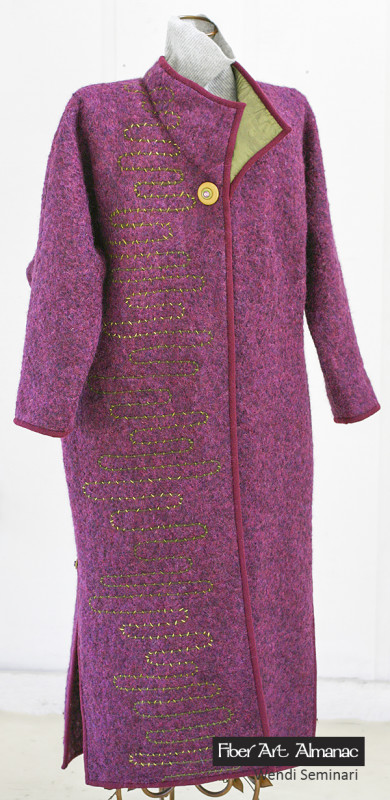
With the drama of the purple mohair fabric, Wendi enhanced her concept of Flow with a stylized meandering stream created by hand needle felting a variegated wool yarn in a random pattern up the right front over the shoulder and down the back. Next she embroidered a simple stitch over the ‘meandering stream’ using three shades of silk thread. She enjoyed this soothing course of hand work and even finished the felled seams with whip stitches.
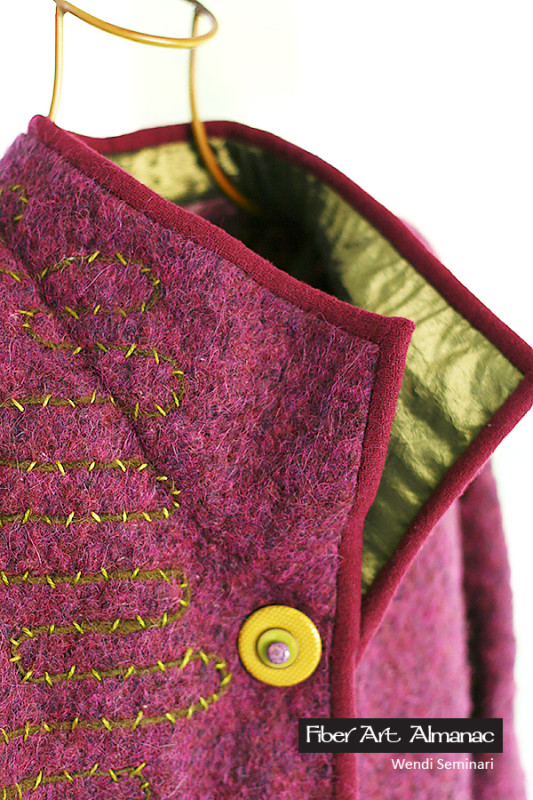
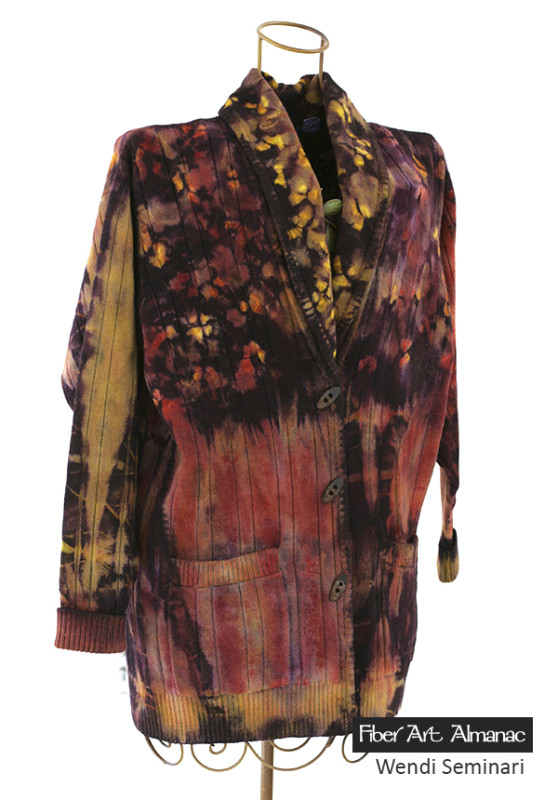
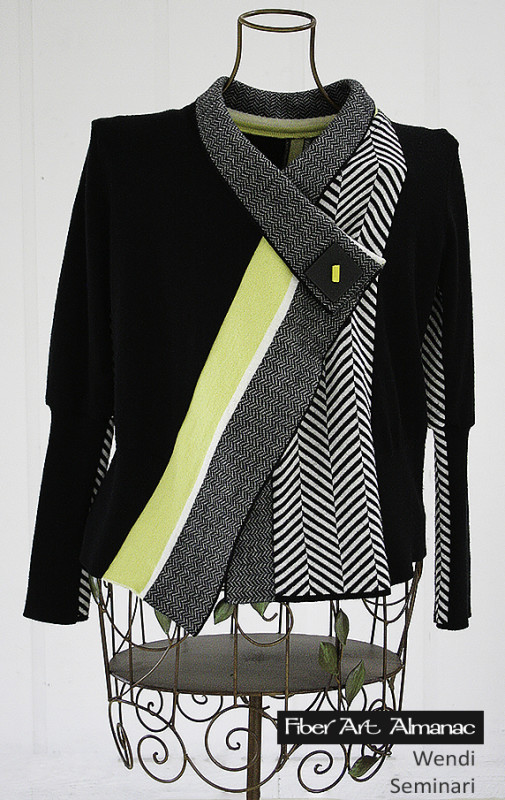
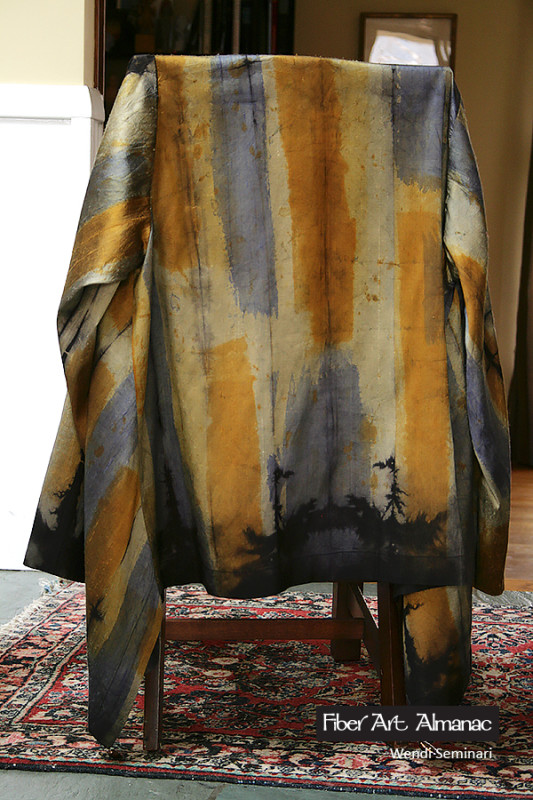
Wendi continues to refine her skills with color and dye techniques. This last fall she took a Master Dyeing Class at the Textile Center in Minneapolis that was an intense six week program which provided challenges as well as camaraderie with other textile enthusiasts.
One last note; here is another exhibit of wearable art from Africa called Majestic African Textiles. It’s exhibited at the Indianapolis Museum of Art and runs through March 2, 2014. It is amazing display of wearable art and cloth. Majestic African Textiles
–Jenny
